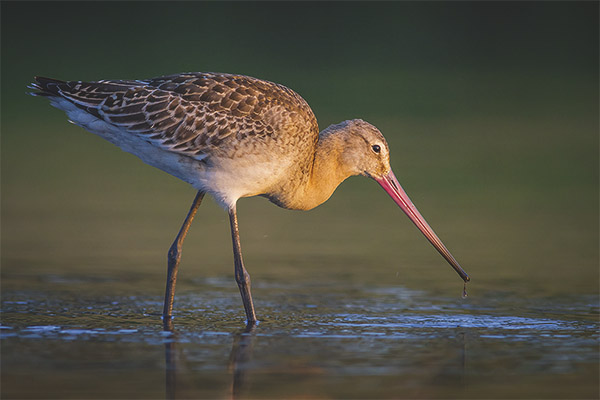The content of the article
The large spindle is a bird that is a member of the family of snipe, along with the goldsmith, red-nosed barb, the long-tailed sandpiper, the great snipe, and many others. All birds from this family have an external similarity, as well as their habitats, as they often settle in damp and swampy places.
Appearance
The body of the spindle can be compared with the pigeon, but with a more elongated neck, legs and beak. For most of the year, the bird does not have pronounced sexual dimorphism, and for this reason the gender difference is almost negligible. Only with the onset of the mating season, the male's plumage changes slightly - spots of reddish flowers appear on the neck, breast and lower abdomen. On the top of the head, longitudinal stripes of a dark brown hue appear, and on the sides they have a bar-shaped pattern. The plumage of the female can also be modified in this period.A white stripe appears on its wings, which is visible when flying. Also, the tail changes to black with a white undertail. In the rest of the year outside of the mating season, representatives of this species of birds have a motley color of plumage with a bit more blotches of brown and black spots on the head and wings. The lower abdomen and breast has a light shade with a small amount of brown feathers. The bird has an elongated beak of gray-orange flowers. The color of the paws is not universal and can be, as well as gray, and orange shades, or mixed colors.
Nutrition
A large spindle is not an adherent of a certain type of food, which can be of both vegetable and animal origin. For the most part, its diet consists of aquatic insects and their larvae, crustaceans, worms, tadpoles, small crustaceans, bugs and spiders. From plant foods, poultry can eat a certain type of grass or the seeds of various plants.Seed spindle is used in most cases during periods of flooding fields, when they soften and swell under the influence of water.
During nesting, grasshoppers and other locust insects may prevail in bird feeding. It is a public bird, usually feeding in large groups.
Breeding
During the nesting period, which lasts from April to mid-June, spindles preferably settle in large groups. Sometimes in one place you can count up to 20 pairs of individuals. The bird is a monogamous species.
In the mating season, which begins immediately upon arrival at the nesting site, they become less fearful and very noisy. This behavior allows the male to attract a female. For the construction of the nest after mating, only the female is responsible. To do this, she chooses a place on the shore of water bodies, dry grass or in the bushes, where she digs up a shallow hole and covers it with dry vegetation. Usually, the female bears up to 5 eggs, painted in olive-green, or, more rarely, red-brown in color with patches of dark olive-brown and ash-gray spots.
After laying, both parents incubate eggs continuously for three weeks. Immediately after their birth, the chicks have a yellowish-ocher-colored gun with dark spots and are ready to feed themselves on their own. They leave their nest with their parents after drying down feathers. Chicks have a strong gluttony and grow rapidly. Within a month, young birds fly well and are ready for independent living.
Habitat
The bird is considered very rare and in some regions of Russia is even listed in the Red Book.
Interesting fact! The bird is appreciated very tasty and valuable meat, but hunting for it is forbidden. In this connection, with a careless hunters charged a huge fine.
Video: big spindle (Limosa limosa)












To send